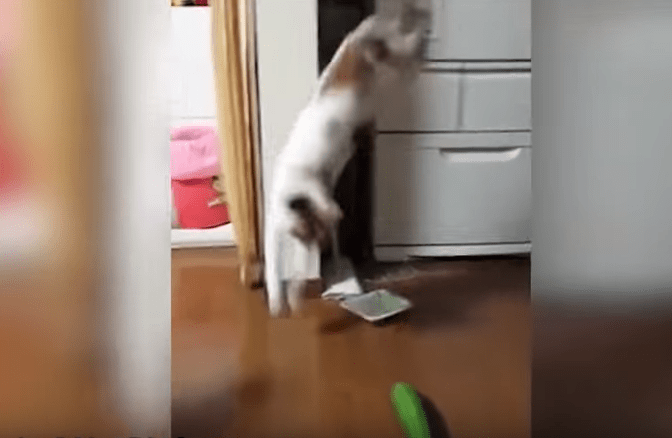By now you are probably aware of the internet craze that involves scaring cats with cucumbers (who comes up with these things??). Of course, the people taking these videos thinks they’re hilarious. The cats? No so much. (Or us!)
In case you are not aware of what we are talking about, here is one such video:
It’s clear this is a strong, violent reaction. This is not a mild, “oh, that surprised me but I am going to go and investigate it.” Most of these cats throw themselves into the air and into the nearby walls in a panic-stricken attempt to get away from the cucumber.
Dr. Frank McMillan, Director of Well-Being Studies for Best Friends Animal Society, said intentionally scaring your pet for the sake of creating a humorous moment can lead instead to injury or behavior issues. Here’s why.
Why do cats react this way? Is it Instinct?
Dr. McMillan: The intense, automatic, and immediate nature of the response suggests a strong innate (instinctual) fear. This would mean that something during the cat’s evolutionary past that resembled this object or situation posed an urgent danger that required a rapid response. But what would that be? We don’t yet know. The most likely reason to evolve such a fear would be the sudden appearance of a predator. An animal that is itself a predator – like a cat – doesn’t mean it can’t be prey for another species. The cucumber may bear a resemblance to a snake (or a large snake head). But perhaps it is something else, such as a weasel.

Pets feel safe in their environment, and anything you do to change that violates that trust and shatters the bond you have with your pet. The other thing that can happen is that your cat can learn that the food area is no longer a safe place. Imagine a cat afraid to eat!
McMillan says that frightening a cat even with something as harmless as a cucumber could lead to serious injury as the cat’s “reflex fear reaction is very forceful and the cat could crash into furniture or land on something injurious.”
Stressed cats aren’t fun pets. Anxiety can cause issues such as destructive behavior and not using the litter box. Such issues are commonly named as reasons as to why cats are taken to shelters.

You mention a stressed cat is not a fun pet. When you scare your cat, what are the potential side-effects?
Dr. McMillan: There are 3 major consequences of a newly acquired fear.
- First is the most obvious – that the actual or threatened presence of the object of fear creates a fearful state of mind that impairs quality of life.
- Second, it can create a sense of insecurity in one’s own home environment, since scary events might happen anytime, anywhere.
- Third, the fear can generalize to anything related to the frightening event. For example, if a cat were repeatedly frightened by a cucumber as it finished eating the cat might become fearful of the food bowl, that part of the kitchen, or even the entire kitchen.
Could such “jokes” lead a cat to be unfriendly towards people as well?
Dr. McMillan: Fearful, yes, because of the way fear can generalize. If a cat were to be repeatedly frightened with a person nearby, the cat’s brain could connect that person with the fear, even if the person had nothing to do with causing the fear. If the cat perceives the person as being the cause of the scare, then such a response would be very likely (as nature intended it to be). If “be unfriendly towards” means “be aggressive toward,” that is possible but much less likely than to become fearful and thus avoidant of that person.
So next time you want a cute cat video, trying filming your cat in a box.
Both you and the kitty will have a grand time, without the possibility of negative side effects resulting from it. Please share this to educate others!
